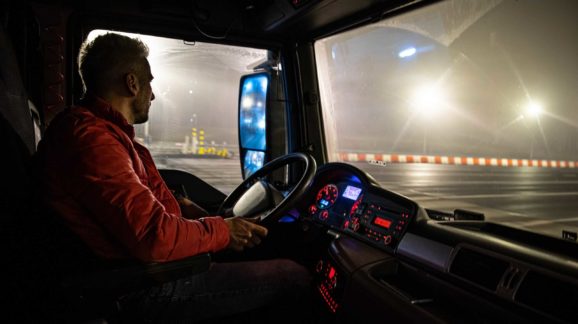Teamsters non-endorsement: Outlier or sign of things to come?

Photo Credit: Getty
The International Brotherhood of Teamsters’s internal poll on who to endorse in the 2024 presidential election was so lopsidedly in favor of Republican nominee Donald Trump that it raises the question of why the union didn’t simply endorse Trump instead of not endorsing anyone. The answer is that many in the leadership remain allied to Democrats and to liberal causes. This schism is a growing problem in the labor movement.
Only five percent of unionized private sector workers voted to be represented by their unions. The vast majority were forced to join a union that already existed when they got their job. Eventually something is going to have to give. An organization that is – in theory, anyway – membership-based cannot last forever if the leaders don’t properly represent the interests and concerns of the rank and file.
Teamster President Sean O’Brien appears to know this and to be trying to placate all sides. The Teamsters’ own internal electronic member poll found that Trump had the support of about 60 percent of their members verses 34 percent for Democratic nominee Kamala Harris. The rest backed other candidates. The union then ran a second poll, and the results were Trump at 58 percent, Harris at 31 percent, and 6 percent undecided. In short, the rank and file supported Trump over Harris by a nearly two-to-one margin.
We know this because the Teamsters publicly released the data. That’s unusual. Though many unions do this type of internal polling, they usually keep the numbers under wraps. So, the fact that the numbers were made public indicates that O’Brien wanted the members and the rest of the public to know where, under ordinary circumstances, the endorsement would have gone.
A contributing factor to the outcome may have been the Democratic Party’s snub of Teamster President Sean O’Brien, who had requested a speaking slot at their convention. The snub was likely a result of O’Brien’s appearance at the Republican convention, where he gave a rousing speech without actually endorsing Trump’s bid. That convention speech angered many of the more progressive folks in the Teamsters’ leadership as well as Democrats. They viewed O’Brien simply appearing on the GOP stage as tantamount to an endorsement. The Teamster leader was then punished by being denied a speaking slot. The Biden administration still hoped for an endorsement, however, and Kamala Harris met with the Teamster leadership prior to the no-endorsement announcement. O’Brien’s public snub by the Democrats may have angered the Teamsters in the middle and swung additional rank and file members to back Trump. That’s just speculation, however.
In any event, releasing the Teamsters’ internal polling numbers sends a clear message to the Democrats: consider yourself lucky that that we didn’t endorse anybody. We were under serious pressure to back Trump.
It sends a message to O’Brien’s critics within the ranks as well: This is who our members favor. The rank and file who back Trump know that they’re not outliers and O’Brien’s critics inside the union now know that he had a compelling reason to talk at the Republican convention.
It is unclear how many other unions are experiencing similar internal friction. The Teamsters stand apart in the labor movement. It is a large union, with 1.3 million members, 1.1 million of which work in the private sector. That makes it one of the unions most affected by shifts in the economy, like the supply chain crisis of 2021. That directly involved the long-haul truckers the union represents, among others. By contrast, the overall union movement, which has about 14.4 million members, is split almost evenly between private and public sector workers. The latter are more insulated from economic shifts.
Nevertheless, the fact that so many union members never asked to join one in the first place suggests that even the progressive labor organizations may have a significant number of dissenters in their midst. It explains why, for example, union leaders are so eager to pass the ill-named Protecting the Right to Organize Act, since most of its provisions give union leaders new means to force rank and file workers to get in line.